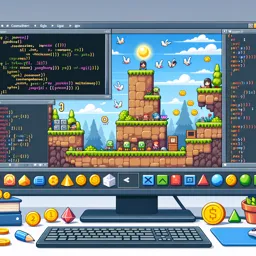Game design is the creative and technical process of inventing the rules, structure, and overall experience of interactive games. It is the foundational stage that impacts how players perceive and interact with games across digital and analog mediums. Effective game design balances challenges, engagement, and storytelling to offer memorable experiences to its audience.
The core elements of game design
- Rules & mechanics: The rules set boundaries for player actions, while mechanics are the systems and behaviors that emerge from those rules.
- Goals & objectives: Clear goals give players a sense of purpose and direction within the game world.
- Interactivity: Good game design encourages active participation, decision-making, and adaptation by players.
- Feedback: Immediate and meaningful feedback helps players understand the outcomes of their actions, fostering skill improvement and satisfaction.
- Balance: Balanced mechanics and progression ensure that a game remains fair, rewarding, and enjoyable for a wide range of players.
Player experience: the heart of game design
At its core, game design revolves around creating an engaging player experience. Designers must consider psychological factors such as motivation, reward, challenge, and emotional engagement. Techniques like flow theory, risk-reward dynamics, and narrative immersion are used to keep players captivated.
Accessibility and inclusivity are also crucial aspects, ensuring games can be enjoyed by people of diverse abilities and backgrounds.
Prototyping and iteration
Prototyping is an essential stage in the game design process. Early prototypes, often built using paper models or simple digital tools, allow designers to test core concepts, identify issues, and refine mechanics quickly and cost-effectively. Iterative design—repeated cycles of testing, feedback, and improvement—is fundamental for achieving a polished and enjoyable game.
Team collaboration and communication
Game design is rarely a solo endeavor. It requires close collaboration between designers, artists, programmers, sound engineers, and producers. Clear communication and documentation ensure a unified vision and smooth development process from concept to release.
CONCLUSION
Game design is a multidisciplinary field blending creativity, psychology, art, and technology. Whether for entertainment, education, or social good, well-designed games can inspire, challenge, and connect people worldwide.
































